You’re striving to improve your Conversion Rate Optimization (CRO), but do you know which metrics really matter?
It’s crucial to identify and understand these key performance indicators if you want to reach your goals.
You’ll find in this guide valuable insights on fundamental CRO metrics like conversion rates, bounce rates, and customer satisfaction.
Let’s dive into how you can utilize these metrics to enhance your marketing strategy.
Table of Contents
ToggleKey Takeaways
- CRO metrics are essential for understanding site effectiveness and user engagement.
- Identifying key performance indicators for CRO can refine strategies and maximize digital footprint.
- Important CRO metrics include bounce rate, average time on page, and conversion funnel drop-offs.
- Correct interpretation of CRO results helps identify problems and opportunities for improvement.
Understanding the Importance of CRO Metrics
It’s crucial to grasp the importance of CRO metrics as they’re key in gauging your site’s effectiveness and user engagement. These indicators provide insight into what’s working on your website, and more importantly, what isn’t. They play a pivotal role in helping you understand your audience better.
Consider them as the compass guiding your digital marketing strategies. You can use CRO metrics to tweak and optimize your site for improved performance. They’re not just numerical values; they’re tools that help craft an engaging user experience.
For instance, the bounce rate tells you if visitors are leaving without taking any action. A high bounce rate signals a disconnect between what you’re offering and what users expect. By focusing on reducing this number, you can enhance user satisfaction and improve conversions.
Similarly, average session duration gives an idea about how long people stay engaged with your content. An increased session time typically indicates that users find value in what they see or read on your site.
Identifying Key Performance Indicators for CRO
In the realm of digital marketing, you’re likely to encounter Conversion Rate Optimization (CRO), but what exactly does it entail?
It’s about understanding and leveraging key CRO metrics that can drive success in your online business.
Equipped with this knowledge, you’ll then learn how to interpret these results effectively, allowing you to refine your strategies and maximize your digital footprint.
Defining Conversion Rate Optimization
You’ll find that defining Conversion Rate Optimization (CRO) is essential to understanding how effectively your website turns visitors into customers. CRO is the process of increasing the percentage of site visitors who complete a desired action, whether it’s making a purchase, signing up for a newsletter or filling out a form.
Remember, it’s not just about driving more traffic to your site; you also need to focus on what those users do once they’re there. Harnessing the power of CRO means analyzing user behavior and adapting your site accordingly. By doing this, you’re not just attracting more eyes to your product—you’re converting them into revenue generators.
In short, solid CRO strategies can boost both customer engagement and profits significantly.
Important CRO Metrics
Keeping an eye on key indicators such as bounce rate, average time on page, and conversion funnel drop-offs is crucial for optimizing your website’s effectiveness. These metrics can unveil hidden truths about user behavior.
A high bounce rate might indicate that users aren’t finding what they’re looking for; you’ll need to revamp your landing pages. If the average time spent on your site is low, it means your content isn’t engaging enough. Conversion funnel drop-offs will tell you where potential customers are losing interest in your product or service.
Understanding these critical metrics allows you to make informed decisions, streamline user experience, and ultimately boost conversion rates. Remember this: knowing how to measure is just as important as what to measure in CRO’s performance analysis.
Interpreting CRO Results
Once you’ve gathered data, it’s essential to correctly interpret the results to determine where changes are needed. Look beyond simple conversion rates; dive deeper into metrics like bounce rate, average session duration, and pages per session. These insights can indicate user engagement levels and potential pain points in your customer journey.
Don’t be hasty in making conclusions based on raw numbers alone. Consider factors such as traffic sources and visitor demographics before drawing any conclusions. For example, if your conversion rate is low but your traffic mainly comes from first-time visitors, perhaps it’s not a design issue but rather an audience targeting problem.
Interpreting CRO results isn’t just about spotting problems; it’s also about identifying opportunities for improvement.
Measuring Conversion Rate: The Fundamental Metric
It’s crucial to understand that your conversion rate is the backbone of your business’s success. It directly reflects how efficiently you’re turning potential customers into actual buyers, and having a higher conversion rate means achieving more sales from the same amount of traffic.
You measure your conversion rate by dividing the number of conversions by the total number of visitors to your site; then multiply that result by 100 to get a percentage. But remember, not all conversions are equal – some might be ‘soft’ conversions like email signups or app downloads, while others are ‘hard’ conversions such as product purchases or subscription signups.
So, it’s essential you don’t just look at this metric in isolation. You need to analyze it alongside other key metrics like customer acquisition cost (CAC), average order value (AOV), and customer lifetime value (CLTV) to gain a holistic view of your CRO performance.
Engagement Metrics: Bounce Rates, Time on Page, and More
You’ve measured your conversion rates, but are you paying attention to engagement metrics like bounce rates and time on page?
Understanding the bounce rate — the percentage of visitors who navigate away from your site after viewing only one page — is crucial for improving user experience.
Moreover, discovering strategies to maximize time spent on a page can significantly enhance user engagement and potentially boost conversions.
Understanding Bounce Rates
Don’t underestimate the importance of understanding bounce rates as they’re a crucial measure of your CRO’s performance. A high bounce rate can signal that users aren’t finding what they need on your site, or that the user experience isn’t up to par.
To lower this number, you’ve got to understand why visitors are bouncing in the first place. Use analytics tools to track user behavior and identify any potential issues with your website design or content. Perhaps it’s not mobile-friendly, or maybe your landing pages aren’t engaging enough.
Maximizing Time on Page
Maximizing time on page isn’t just about adding more content. It’s about making that content valuable and engaging to your visitors. You must strive to provide insightful information that resonates with your audience’s needs and interests.
The longer a visitor stays on your site, the more likely they are to convert into a customer. It’s crucial to analyze metrics like average session duration or pages per session to gauge user interest and engagement.
Enhance usability by ensuring quick load times and easy navigation. These factors significantly influence the time spent on your website.
Importance of Customer Satisfaction Metrics in CRO
Understanding the significance of customer satisfaction metrics in Conversion Rate Optimization (CRO) is crucial for your business’s growth and success. You need to grasp that these metrics aren’t just numbers; they’re valuable insights into how well you’re meeting your customers’ needs and expectations.
Customer satisfaction is directly linked to conversion rates – if your customers are happy with their experience, they’re more likely to convert. So, start by measuring aspects like product quality, service speed, and ease of use. These elements can significantly influence a customer’s overall satisfaction.
Furthermore, don’t overlook the power of feedback. It’s an invaluable tool for identifying areas where you can improve. Be proactive in soliciting it through surveys or follow-up emails after purchase or interaction. Remember, it’s not just about gathering data but understanding what it means and acting on it effectively.
Utilizing CRO Metrics to Improve Your Marketing Strategy
To boost your marketing strategy, it’s essential to effectively utilize conversion rate optimization data. This involves scrutinizing the metrics obtained from your CRO performance, which are like a treasure map guiding you towards better customer satisfaction and higher conversions.
Firstly, analyze your bounce rates. Are visitors leaving too soon? If so, you may need to enhance your site’s user experience or clarify your messaging.
Secondly, consider the average session duration. Are users sticking around or do they leave quickly? A short duration could indicate lack of engagement with your content.
Thirdly, examine page views per visit. This metric shows how much users explore before exiting – more page views often mean more interest in what you’re offering.
Lastly, don’t ignore checkout abandonment rates for e-commerce sites; high percentages here signify problems with the checkout process.
Remember that these aren’t mere numbers – they’re insights into user behavior and preferences. By utilizing these key metrics in crafting or refining your marketing strategies, you’ll be better equipped to meet customer expectations and drive conversions upwards.
Stick to this path – it’s not about guessing but knowing where to steer your business for success!



